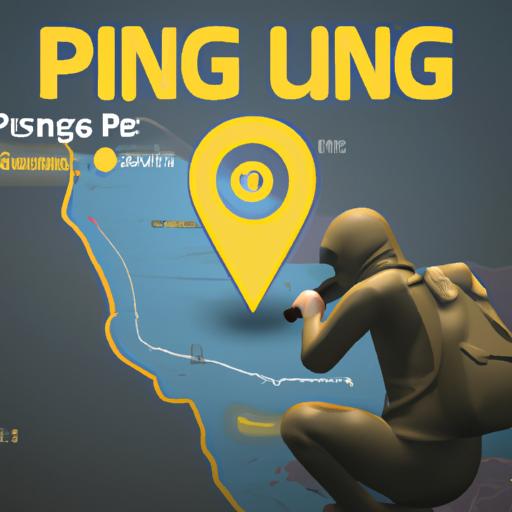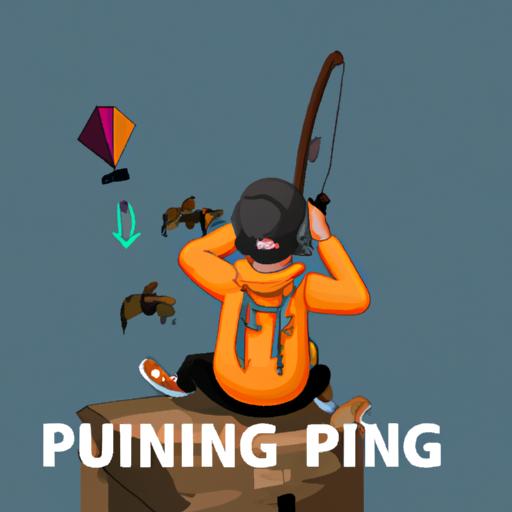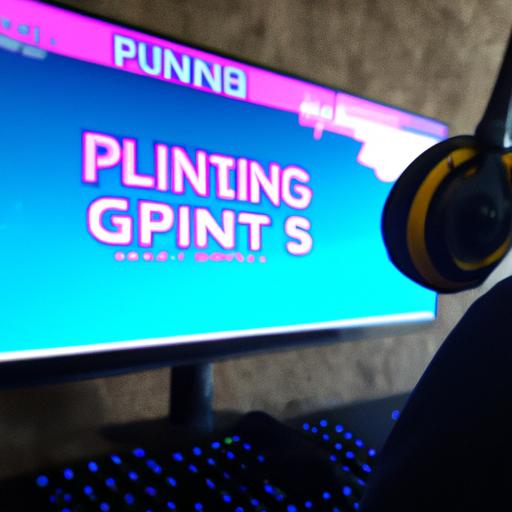If you’re a fan of PlayerUnknown’s Battlegrounds (PUBG), then you know how important communication is in the game. Whether you’re playing with friends or random teammates, being able to convey information quickly and accurately can be the difference between winning and losing. One of the most effective ways to communicate in PUBG is through pinging. In this article, we’ll cover everything you need to know about how to ping in PUBG.
What is Pinging in PUBG?

Pinging specific locations on the map helps teammates coordinate their movements
Pinging is a feature in PUBG that allows players to mark locations, items, and enemies on the map for their teammates to see. This is done by pressing a specific button on your keyboard or controller, which will place a marker on the map that your teammates can see. Pinging is a quick and efficient way to communicate important information, such as the location of an enemy or a valuable piece of loot.
How to Ping in PUBG

Pinging loot drops helps teammates gear up quickly and effectively
Using pings in PUBG is relatively simple, but it’s essential to know the basic controls. By default, the ping button is set to the middle mouse button on PC and the left bumper on Xbox One and PS4. To ping an item or location, simply aim at it and press the ping button. Your teammates will see the marker on their map and can use it to navigate to the location.
To ping an enemy location, aim at the enemy and press the ping button. This will place a red marker on the map that indicates the enemy’s location. You can also ping specific directions by aiming in the direction you want to ping and pressing the ping button. This is useful for indicating the direction of incoming gunfire or the location of a moving enemy.
Pinging can also be used to mark loot drops. When a loot drop appears on the map, aim at it and press the ping button. This will place a marker on the map that indicates the location of the drop. Your teammates can use this information to plan their approach and secure the loot.
Advanced Pinging Techniques

Customizing ping settings can make pinging more efficient and personalized
While basic pinging is useful, advanced techniques can take your communication to the next level. One of the most important advanced pinging techniques is pinging enemy locations. When you spot an enemy, it’s crucial to let your teammates know where they are. By pinging the enemy’s location, you can alert your team to the threat and coordinate an attack or retreat.
Another advanced pinging technique is pinging specific directions. This is useful when you hear gunfire or footsteps but can’t see the source. By pinging the direction of the sound, you can alert your teammates to the threat and coordinate a response. This technique is also helpful when trying to navigate complex terrain or buildings.
Lastly, pinging loot drops is an advanced technique that can give your team an advantage. When a loot drop appears on the map, it’s often a highly contested area. By pinging the location of the drop, you can help your team navigate to the area quickly and secure the loot.
Tips to Improve Pinging Skills
Like any skill, pinging takes practice to master. Here are some tips to improve your pinging skills:
Practice Pinging Regularly
The more you practice pinging, the more natural it will become. Make an effort to ping items, locations, and enemies during every game you play. With practice, you’ll become more efficient at pinging and better at communicating with your team.
Use Headphones for Better Audio
PUBG is a game that relies heavily on sound cues. Using headphones can help you hear enemy footsteps, gunfire, and other important sounds. This will make it easier for you to pinpoint enemy locations and communicate them to your team.
Customize Ping Settings
PUBG allows you to customize your ping settings to your preferences. Experiment with different settings to find the ones that work best for you. For example, you can change the color of your pings to make them more visible or adjust the ping duration to make them last longer.
By following these tips and practicing advanced pinging techniques, you can become a master communicator in PUBG. Remember, clear and concise communication can be the difference between a chicken dinner and a quick exit from the game.
Common Mistakes to Avoid
While pinging can be a useful tool in PUBG, there are some common mistakes that players should avoid. One of the most significant mistakes is over-pinging. This occurs when a player pings too frequently, making it difficult for their teammates to see important information. Over-pinging can also be distracting, as it can clutter the screen with too many markers.
Another mistake to avoid is ping spamming. This is when a player repeatedly pings the same location or item, even after their teammates have acknowledged the ping. Ping spamming can be annoying and can cause your teammates to tune out important information.
Finally, ignoring pings is a mistake that can be just as detrimental as over-pinging or ping spamming. If your teammates are pinging important information, such as the location of an enemy or a valuable piece of loot, it’s essential to pay attention and act accordingly. Ignoring pings can result in missed opportunities and can put your team at a disadvantage.
Conclusion
In conclusion, pinging is a crucial tool for effective communication in PUBG. By using pings, players can quickly and efficiently convey important information to their teammates, such as the location of enemies or valuable loot. While there are some common mistakes to avoid, such as over-pinging and ping spamming, pinging remains an essential part of team communication in PUBG.
As the game continues to evolve, we can expect to see further developments in pinging technology. This will likely include new ways to ping, such as voice commands or custom markers. Regardless of how pinging develops, it’s clear that it will remain a vital aspect of PUBG gameplay for years to come. So, start practicing your pinging skills and gain an edge over your opponents in PUBG.